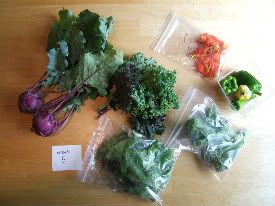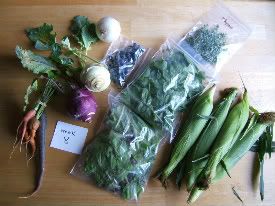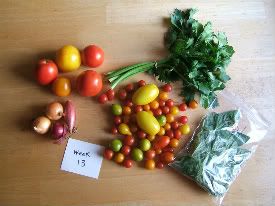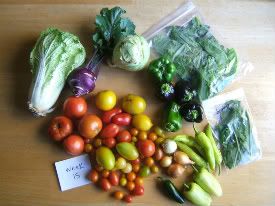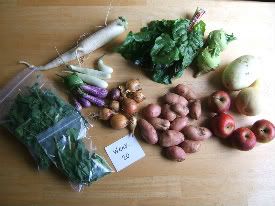I think this is just awesome! What a creative way to raise needed funds for Fort Wayne's refugee initiatives. I was surprised and excited to learn that 5 1/2 acres have been set aside for raised garden beds by Autumn Woods, an apartment complex housing many Burmese families. I'm glad Fort Wayne is recognizing the importance of growing food, and hope the projects keep coming.
Abigail Kopen and Tony Henry of Deer Park Irish Pub put together an Irish-themed wheelbarrow of cabbage and Brussels sprouts as a fundraiser for the World on Wheels Garden Project.
Wheelbarrows for good cause
Money raised to help gardens of local refugees
Published: May 20, 2012 3:00 a.m.
Rosa Salter Rodriguez | The Journal Gazette
When it comes to public art contests, Fort Wayne has had giant decorated sneakers and smaller-than-life-size decorated mastodons.
“Now it’s time for wheelbarrows,” says Hollie Chaille.
This summer, Chaille is spearheading the World on Wheels (W.O.W.) Garden Project. The project is enlisting artists, gardeners, businesses, churches and community groups to raise money to continue gardening and urban farming initiatives for local refugees.
The idea, she says, is for groups or individuals to plant an appropriately decorated 6-cubic-foot wheelbarrow with plants used in the cuisine of one of the countries or ethnic groups represented in Fort Wayne.
Decorated wheelbarrows will go on display for viewers’ votes at Fort Wayne’s Taste of the Arts festival on Aug. 25. Plant-filled wheelbarrows will be displayed during events and at various locations around downtown beginning Sept. 7.
The wheelbarrows will then be auctioned to the highest bidder at the International Blast Festival Sept. 29. Winners of the design competition also will be announced that day.
Chaille, director of Catherine Kasper Place, which coordinates refugee integration activities, says nine sponsors have been recruited so far. Cuisines include Burmese, Filipino, Irish, Scottish, Greek, she says; Middle Eastern and Bosnian groups have indicated interest.
The project has room for 30 participants, and organizers would like to see nations such as Mexico, France, Italy, Spain, China, Japan and India represented.
“You should be able to go on a tour of world cuisines just by touring these W.O.W. gardens,” Chaille says.
Chaille says the need to raise money for refugee efforts comes because two federal grants amounting to about $150,000 may soon end.
One provides money for job readiness and training while another, through the Refugee Agricultural Partnership Program, has been supporting gardening and small-scale farming by refugees.
This year, about 26 people are participating, mostly refugees from Myanmar, formerly Burma. About a dozen of them are growing specialty vegetables to be sold at existing city farmers markets.
Last year, refugee growers sold at specialty produce markets at the Women, Infants and Children office parking lot on Calhoun Street, but they were discontinued this year because of construction of a garage, Chaille said.
The initative this year is also consolidating plots for raised bed gardens on 5 1/2 acres on city property adjacent to Autumn Woods named Victoria Acres. Many Burmese families live in Autumn Woods.
Chaille says the deadline for those interested in sponsoring or planting a wheelbarrow is Friday to give plants time to grow or germinate from seed.
Sponsorships are available at two levels – $500, which includes signage and recognition, and $1,500, which includes enhanced opportunities for advertising, an invitation to a Farm-to-Table celebration Sept. 30 and the option to keep the wheelbarrow. The Farm-to-Table event will feature ethnic dishes made from crops grown by Victoria Acres refugee farmers.
She says she hopes groups interested in putting together a wheelbarrow will team up with restaurants or other businesses or non-profits for sponsorships, and those interested in sponsoring can be teamed up with a group by organizers.
Wheelbarrows can be designed by a participating individual group or by a participating artist, Chaille says.
Groups, with their artist, will receive a free table at International Blast, she says, and selected designers will be eligible for a $50 stipend for materials. A limited amount of free plant material also may be available, Chaille adds.
The project is also recruiting master gardeners or other gardeners to assist groups in picking plants and teach planting and growing techniques, she says.
The deadline for participating designers to submit a proposal is June 22. A kickoff event at which sponsors, participating groups and artists can meet will take place July 28.
Chaille says the events spotlight Fort Wayne’s diversity and refugees’ continuing needs.
“These grants only support services within a certain limited time frame, and we focus on integration, and that takes longer than a specific small window of time that a grant would allow us. All the services we provide – mental health, establishing employment, child development – are ongoing so we need to keep funding them,” Chaille says.
“After all, we’re all refugees from somewhere.”
rsalter@jg.net
© Copyright 2012 The Journal Gazette. All rights reserved. Neither this material nor its presentation may be published, broadcast, rewritten or redistributed.














